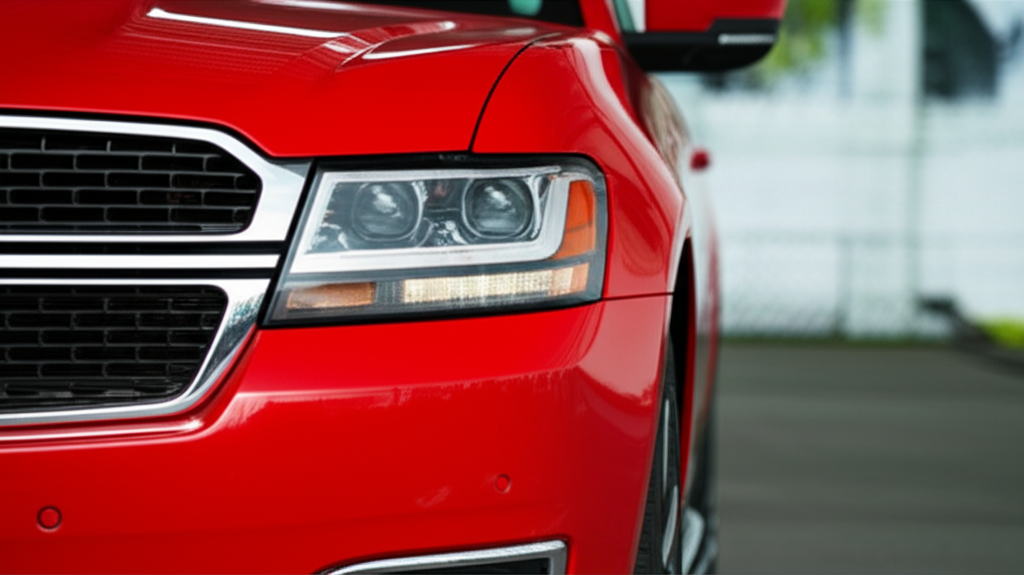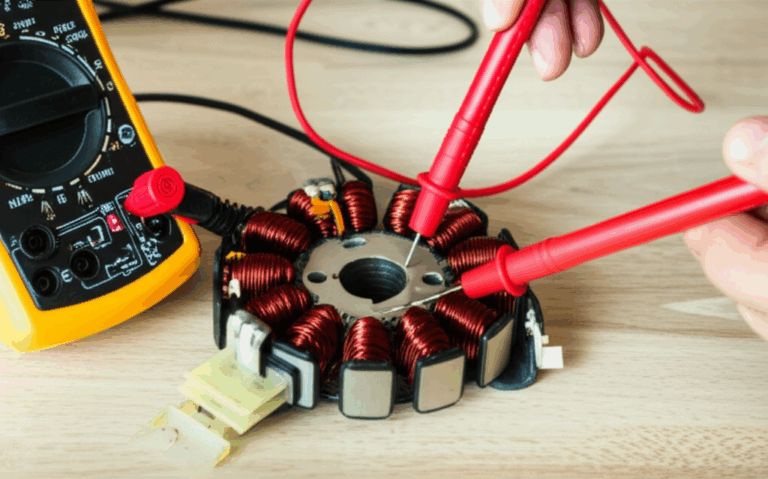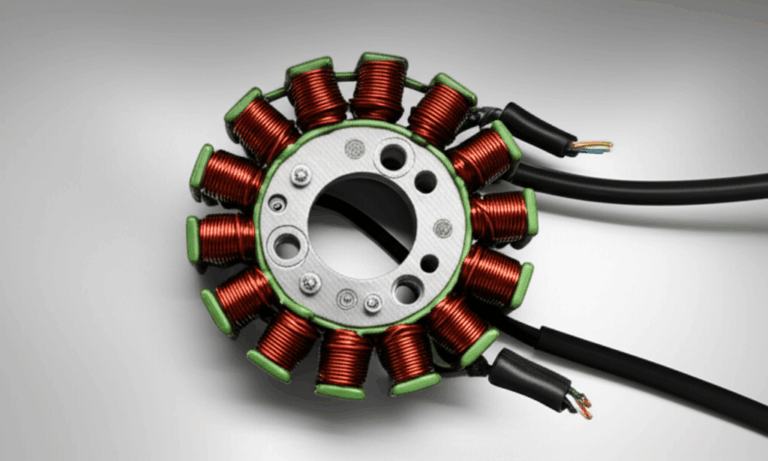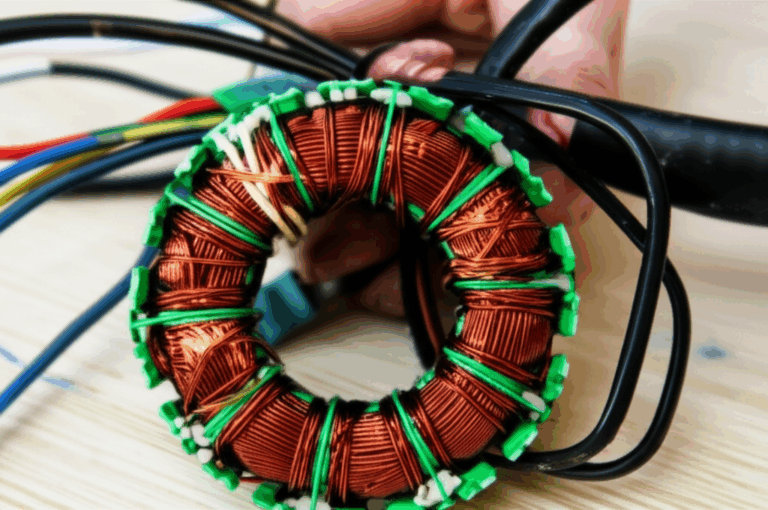
Beyond the Badge: Why General Motors Invests in Strategic Sponsorships
Table of Contents
- Introduction: More Than a Logo on a Wall
- Core Business Objectives Driving GM Sponsorships
- Brand Awareness and Image Enhancement
- Sales and Market Share Growth
- Competitive Differentiation
- Strategic Pillars That Guide GM’s Sponsorship Choices
- Community Engagement and Corporate Social Responsibility
- Innovation and Future Mobility Storytelling
- Employee Engagement and Culture
- The Sponsorship Mix: Where GM Shows Up and Why
- Sports Marketing
- Entertainment and Lifestyle
- Community and Educational Initiatives
- Technology and Future Mobility
- How GM Activates Sponsorships for Maximum Impact
- Digital Content Integration and Social Media Amplification
- Influencer and Creator Collaborations
- CRM, Dealers, and Local Market Penetration
- B2B, Supply Chain, and Partner Branding
- Measuring Success: What ROI Looks Like in Real Life
- Risks, Course Corrections, and Crisis Communication
- Lessons From the Field: What I’ve Seen Work
- The Bottom Line: Sponsorships as a Long Game for GM
Introduction: More Than a Logo on a Wall
When I first started studying how big automakers spend their marketing dollars, I assumed sponsorships were vanity projects. Expensive logos. VIP tickets. Photo ops. Then I walked a few miles in those shoes. I sat in ballparks next to families wearing team jerseys with Chevrolet patches. I watched a beaming high school team unveil a FIRST Robotics robot with GM engineers cheering from the front row. I stood at CES while a GM product lead streamed a live demo of new EV tech to an audience that skewed developer, investor, and journalist all at once. The lightbulb went on.
General Motors does not sponsor for the sake of visibility alone. Sponsorships are a strategic lever that GM pulls to build brand equity, shape perception, drive sales, fuel innovation narratives, support communities, and rally employees. When you see a Chevrolet logo at a NASCAR race or a Cadillac display at a premiere, you are looking at a business tool. Not a decoration.
In this guide I’ll unpack why GM offers sponsorships, how those choices connect to hard business outcomes, and what it looks like when the strategy works. I’ll also share specific takeaways I learned from events, dealer activations, and community programs that made the strategy click for me.
Core Business Objectives Driving GM Sponsorships
Brand Awareness and Image Enhancement
GM manages a portfolio of distinct brands, not just one monolith. Chevrolet, GMC, Buick, and Cadillac each carry different promises. Sponsorships let GM place those brands in the right cultural context.
- Chevrolet and performance heritage: At NASCAR and the IndyCar Series, Chevrolet leans into performance, engineering credibility, and American motorsports culture. That builds trust with buyers who want toughness and speed.
- GMC and professional-grade swagger: NHL and MLB partnerships put GMC trucks and SUVs in front of fans who prize capability, durability, and comfort. The in-stadium presence and tailgate experiences reinforce that premium yet rugged identity.
- Cadillac and modern luxury: Awards season, film premieres, and art or design showcases place Cadillac in luxury conversations. That positioning matters when you’re courting a style-conscious audience who expects craftsmanship and tech.
- Buick and family-friendly comfort: Community events, youth sports, and local cultural partnerships help Buick speak to calm, quiet, and family-forward values.
Brand building through events is not fluff. Category buyers attach meaning to signals. A vehicle is a rational purchase with an emotional wrapper. Sponsorships let GM shape that wrapper in public, at scale.
There’s another piece here. Reaching younger demographics. Sponsorships around esports, college sports, music festivals, or STEM programs move the brands into the consideration set earlier in life. You do not wait for someone to turn 40 to introduce a brand like Chevrolet or Cadillac. You meet them at the concerts and campuses where culture forms.
Sales and Market Share Growth
If sponsorships do not support growth, they do not last. GM uses sponsorships to:
- Drive purchase intent through emotional connection. Fans who associate a brand with winning moments often convert faster. I’ve seen dealer data spikes align with local team runs and in-venue activations.
- Promote product launches and features. When GM reveals an Ultium-based EV or updates Super Cruise capabilities, a sponsorship platform amplifies the story. It also gives people a place to touch, test, and ask questions.
- Generate leads in the wild. At games and festivals, experiential teams collect qualified prospects. Test drive sign-ups, QR scans, and dealer appointment bookings all roll up into CRM. Those touchpoints turn into sales when follow-up is tight.
I’ve watched a simple tailgate ride-and-drive turn a casual truck fan into a GMC Sierra owner. The spec sheet mattered. The torque did too. The deciding factor was the feeling of being seen by the brand where that customer already spent Saturdays with friends.
Competitive Differentiation
Automotive marketing can feel like a shouting match. Sponsorships help GM stand out in a few ways.
- Own a lane your rivals do not. If a competitor saturates one sport, GM can put chips on a different table with a more precise audience match. Maybe it’s PGA Tour hospitality for luxury prospects. Maybe it’s STEM competitions for future talent.
- Signal values through causes. CSR and cause-related marketing show what a company believes. Disaster relief with the American Red Cross, housing with Habitat for Humanity, or youth development with Girl Scouts and the National Urban League says more than an ad ever will.
Differentiation is not only a choice of event. It’s the way you activate it. GM lifts its sponsorships with content, data, and dealer integration that make the dollars work harder.
Strategic Pillars That Guide GM’s Sponsorship Choices
Community Engagement and Corporate Social Responsibility
Every automaker claims to care about community. GM backs that up with programs that tie to real needs.
- Education and workforce development. Partnerships with FIRST Robotics, SAE student competitions, and university collaborations build STEM skills and inspire the next wave of engineers. Those programs double as talent pipelines and brand affinity engines.
- Philanthropic initiatives. Through corporate giving and the General Motors Foundation, GM supports organizations like United Way, St. Jude Children’s Research Hospital, and Ronald McDonald House Charities. You’ll also see GM employees volunteering on build sites with Habitat for Humanity. This is community involvement with hands and hearts on the line.
- Safety and sustainability. Driver safety programs, environmental protection initiatives, recycling efforts, and sustainable mobility partnerships show up in local communities near GM plants and beyond. The goal is to improve daily life where GM lives and works.
I remember standing in a school gym where a robotics team showed off a machine built with help from GM mentors. Parents cried. Students beamed. Recruiters took notes. That is CSR with a flywheel effect.
Innovation and Future Mobility Storytelling
GM’s future rides on electric and autonomous technologies. Sponsorships let the company show progress and spark belief.
- EV momentum. Showcases at CES, SEMA, and technology conferences position GM as a serious engineering player. Think Ultium battery platform, the Cadillac Lyriq, the Chevrolet Bolt EV, and the GMC Hummer EV. Demos and tech talks turn abstract innovation into tangible experience.
- Autonomous and connected. Cruise Automation brings autonomy into the public conversation. OnStar and connected car services widen that story. Smart city partnerships and urban mobility solutions move the audience beyond metal to the ecosystem.
- High-performance halo. Cadillac’s collaborative effort with Andretti Global to enter Formula 1 signaled a push into elite performance engineering. Even as the series decision process played out, the message to the market was clear. Cadillac sees itself in the ring with the world’s best, especially as luxury goes electric.
If you’re curious about the hardware inside EV motors that make these stories real, you can dive into the building blocks like electrical steel laminations, the stator core lamination, and the rotor core lamination. These components sit at the heart of efficiency and performance. They also make great visuals at tech activations when engineers pull back the curtain for the public.
Employee Engagement and Culture
Sponsorships don’t only face outward. They boost pride inside the company.
- Morale and belonging. When employees see their company show up for causes they care about, morale rises. Pride translates to productivity and retention.
- Talent attraction. A software developer who watches GM on stage at CES talks to a recruiter with different energy. A college student who competes in a GM-sponsored engineering challenge adds the company to a mental short list.
- Culture in motion. Internal access to games, events, and volunteer days creates shared memories. Those moments reinforce the values written on the wall.
I’ve met engineers who stick around because they mentor robotics teams. They feel the mission. That matters.
The Sponsorship Mix: Where GM Shows Up and Why
Sports Marketing
Sports hold a special place in GM’s plan. The reach is massive. The emotion is unmatched.
- NASCAR with Chevrolet. This long-running partnership ties Chevrolet to performance, ruggedness, and American heritage. It taps a passionate fan base that notices who shows up year after year.
- MLB, NHL, and the PGA Tour. These leagues offer broad audience reach and a range of demos. Family values show up at the ballpark. Aspirational lifestyle plays out on golf greens. Hard-nosed intensity skates across the ice.
- The Olympic and Paralympic movement. Global platforms like the Olympic Games unlock national pride, unity, and narratives about innovation under pressure. GM can link vehicle technology and human achievement in a single breath.
At a Detroit Grand Prix weekend, I watched Chevy’s activation team set up performance simulators, display race engines, and answer questions about production models that share design DNA. The line never got shorter. People want to see how a racing story trickles down to the showroom.
Entertainment and Lifestyle
Culture does not live in stadiums alone.
- Film, music, and design. Cadillac shows up in luxury spaces where taste is currency. Music festivals, premieres, and design weeks set the table for conversations about craftsmanship, materials, and tech-forward interiors.
- Experiential moments. A pop-up test drive in an upscale shopping district. A co-created lounge with a fashion house. An immersive display that lets you touch materials and hear the sound profile GM engineers tuned for a luxury cabin. The goal is to make people feel what the brand stands for.
These experiences work because they respect the audience. They do not shout. They invite.
Community and Educational Initiatives
Some of the most powerful sponsorships happen close to home.
- Youth engagement and education. FIRST Robotics, SAE competitions, and school-based STEM initiatives build skills and spark curiosity. GM employees often mentor, judge, or coach.
- Local charities and relief. When disasters strike, GM shows up with vehicles, volunteers, and funding through partners like the American Red Cross. When communities need long-term support, United Way and similar organizations help GM target resources.
- Workforce training and supplier diversity. Programs that prepare people for advanced manufacturing jobs matter in plant communities. Supplier diversity partnerships widen opportunity and strengthen the ecosystem.
These are not one-day photo opportunities. The work compounds over years.
Technology and Future Mobility
Tech showcases put innovation front and center.
- CES and SEMA. CES offers a stage for software, connectivity, and autonomy. SEMA spotlights performance, aftermarket, and customization. GM uses both to tell the story of mobility solutions, from BrightDrop delivery vehicles to Ultium battery chemistry and manufacturing innovation.
- Thought leadership. Panels with academic partners, think tanks, and policy groups let GM help shape industry trends. Topics range from EV charging infrastructure to smart cities and public policy for autonomous vehicles.
- University collaborations. Research sponsorships and student projects connect GM to the academic frontier, then to the interns and hires who come next.
For readers who like to go deeper on the electric motor side of EV innovation, it helps to see how motor core laminations influence efficiency, heat management, and performance. These details sit behind the moment when a customer whispers wow during a test drive.
How GM Activates Sponsorships for Maximum Impact
Signing a check is the easy part. Activation wins the day.
Digital Content Integration and Social Media Amplification
A modern sponsorship lives or dies online.
- Always-on content. GM teams capture behind-the-scenes footage, player or creator interviews, and tech explainers. Those assets fuel social channels before, during, and after the event.
- Paid and organic synergy. Media buys amplify the best content while creators drive authentic reach. You measure both. You optimize both.
- Real-time interactivity. Polls, live Q&A sessions, AR filters, and fan challenges turn passive viewers into participants. That energy translates to higher watch times and better recall.
I’ve seen a simple engineering whiteboard session at CES outperform a glossy ad because it felt real and taught people something.
Influencer and Creator Collaborations
Influencers can bridge the gap between brand and community.
- Fit over fame. GM gains more from a credible tech reviewer at CES than from a random celebrity with no automotive chops. The creator’s audience needs to believe the message.
- Co-creation. Let the creator drive the story. Scripted reads feel hollow. A ride-along review or an EV charging challenge across a city feels human.
- Measurement. Track reach, engagement, sentiment, and conversions back to landing pages or dealer inquiries. Good influencer work can pay for itself in both upper and lower funnel terms.
CRM, Dealers, and Local Market Penetration
Events feed the CRM machine when teams work in sync.
- Lead capture. QR codes, scan-to-win, and app-based entry forms push contacts into centralized systems. Consent and data hygiene matter.
- Nurture flows. Automated yet personalized messages follow up fast with relevant content. Book a test drive. Compare trims. Explore financing.
- Dealer activation. Local dealers often sponsor youth baseball or community festivals in tandem with national campaigns. That boots-on-the-ground presence builds trust and shortens the distance to a sale.
I still remember a dealer who moved iron after a minor league stadium activation because the follow-up team hit the phones within 24 hours. Timing beats almost everything.
B2B, Supply Chain, and Partner Branding
Not all sponsorship value is consumer-facing.
- B2B hospitality. PGA Tour tents and industry conferences give GM a quiet room to deepen relationships with fleet buyers, suppliers, and municipal partners.
- Supplier showcases. Manufacturing innovation displays at events like the SEMA Show help suppliers shine alongside GM. That builds pride and signals a healthy ecosystem.
- Government relations and public policy. Sponsorships of policy forums, think tank events, and academic conferences create space for informed debate about infrastructure, trade, and safety. GM needs those tables to move the future forward.
Measuring Success: What ROI Looks Like in Real Life
ROI in sponsorships is part art, part science. Here’s how I’ve seen teams evaluate impact.
- Brand lift studies. Pre and post-event surveys track awareness, favorability, and consideration. You want to see movement among target segments. You also want to understand why it moved.
- Media value. Impressions, share of voice, and equivalent media value matter. So does quality. An in-depth feature with Automotive News beats a dozen low-quality mentions.
- Leads and conversions. Count test drive sign-ups, dealer appointments, and sales that tie back to activation codes or tracked links. Watch website traffic and configuration tool usage in the event’s geographic radius.
- Engagement metrics. Time on content. Video completion rates. Social saves and shares. These metrics predict long-term brand affinity.
- Community impact. For CSR programs, measure volunteer hours, funds raised, students reached, and program outcomes. Stakeholder feedback helps you tune programs for real impact.
- Employee metrics. Internal surveys pick up morale shifts. Recruiters track applicant quality and volume after high-visibility tech showcases or campus sponsorships.
- Investor and policy signals. Analyst notes, media narratives, and policy roundtable invitations all point to perceived leadership. Thought leadership through sponsorships has a reputation ROI that compounds over time.
You won’t pin every outcome to a neat decimal. You triangulate. You learn. You refine the next plan.
Risks, Course Corrections, and Crisis Communication
Sponsorships come with risk.
- Relevance risk. An event can drift away from your audience or values. You reassess and pivot before inertia sets in.
- Reputation risk. A partner can face controversy. You need crisis communication plans for quick, principled decisions.
- Opportunity cost. Money tied up in low-yield sponsorships can’t fund better bets. Sunset what underperforms. Reinvest in activations that hit.
The best teams pressure test assumptions before contracts renew. They also keep a reserve for opportunistic plays when culture shifts.
Lessons From the Field: What I’ve Seen Work
A few moments stay with me.
- The ballpark Saturday. A Chevrolet activation sat outside the gates with a simple promise. Step in. Sit down. Feel the features. The team handed kids team-branded stickers. Parents asked about safety ratings and finance incentives. The sales manager confirmed that Monday brought a lift in qualified leads from families who had never visited the showroom.
- The robotics reveal. In a packed gym, students launched a complex sequence their robot had learned. GM mentors clapped with everyone else. Afterwards, a senior engineer broke down the control logic for a small group. That same engineer later reviewed resumes from three students who wanted internships. That loop felt complete.
- The CES explain-it-like-I’m-five demo. A GM product lead pulled a cross-section of an EV motor onto a table and walked through efficiency. Stator. Rotor. Lamination stacks. Less heat. More range. The chat exploded with questions about charging and battery health. The right kind of nerdiness builds trust with both consumers and engineers. If you want to see the parts at a glance, those cross-sections often highlight electrical steel laminations, the precision of the stator core lamination, the balance of the rotor core lamination, and how integrated motor core laminations reduce losses.
Those examples taught me a simple truth. Sponsorships work when they respect people’s time and intelligence. They fail when they chase attention without offering value.
The Bottom Line: Sponsorships as a Long Game for GM
So why does General Motors offer sponsorships? Because sponsorships help GM do five things at once.
- Build brand awareness and sharpen perception for Chevrolet, GMC, Buick, and Cadillac.
- Grow sales and market share through emotional resonance and hands-on experience.
- Differentiate from competitors by aligning with values, communities, and innovation spaces others ignore.
- Tell a credible story about future mobility, from Ultium batteries to Cruise autonomy and connected services like OnStar, while positioning GM as an industry leader.
- Strengthen relationships with employees, suppliers, policymakers, investors, dealers, and the communities where GM lives and works.
I see sponsorships as a flywheel for GM. Thoughtful choices spin the wheel. Smart activations add torque. Honest measurement adds balance. Community and innovation stories keep momentum when the market shifts. The badge on the banner matters less than the strategy behind it. When GM aligns a sponsorship with a clear objective, a relevant audience, and a plan to activate in the real and digital worlds, the payoff shows up in the metrics that count and in the moments you feel.
That’s the work beyond the badge. That’s why GM invests.







